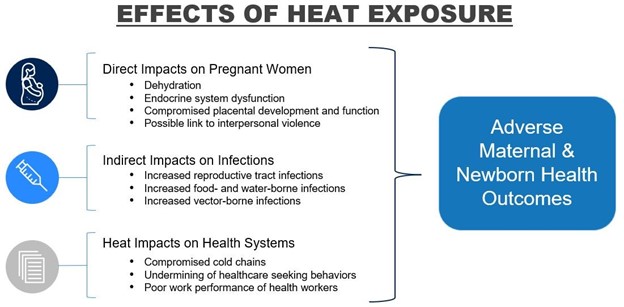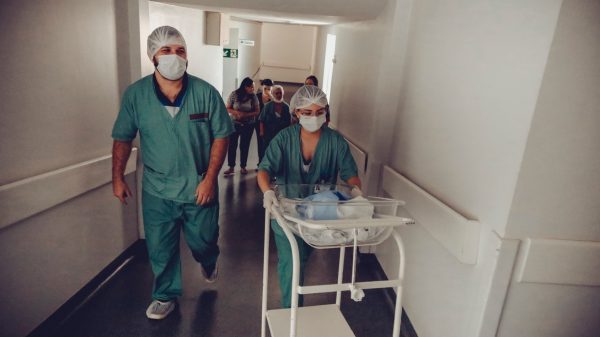
The Bill & Melinda Gates Foundation engaged the START Center to better understand the intersection of climate change and maternal and neonatal health. Specifically, the foundation desired a presentation that would raise awareness and understanding of climate change and its impact on these vulnerable populations. Based on the clients’ request, the START team focused on heat as an exemplar of climate change on maternal and neonatal health outcomes, recognizing that climate change includes a much broader range of risk factors.
The START team completed four overarching goals for the project. First, they provided a set of priority research questions and summarized the evidence of climate change to address each question for the foundation’s Maternal, Neonatal, and Child Health team. Second, they conducted a scoping literature review that included peer-reviewed literature published between 2020-2023 to better understand the associations between extreme heat exposure during pregnancy and a variety of adverse maternal and neonatal health outcomes (e.g., stillbirth, preterm birth, maternal hypertension, etc.). Third, they conducted an informal review of gray and peer-reviewed literature to identify a set of health system-level interventions that would address the impacts of extreme heat exposure during pregnancy. The team also supplemented this work by engaging eleven key informants to provide additional context. Finally, they provided a brief landscape analysis of global partners who are implementing heat-specific interventions.
The START team found that, while definitions of extreme heat exposure varied widely across studies, there is clear evidence that extreme heat exposure during pregnancy is associated with a variety of adverse maternal and neonatal health outcomes. Specifically, extreme heat exposure during pregnancy is associated with increased risk of preterm birth, stillbirth, low birthweight, congenital anomalies, maternal hypertension, and gestational diabetes. There are already a set of potential interventions to address these impacts that include early heat warning systems, educational campaigns, and personal cooling clothes in conjunction with water-rest-shade initiatives. However, water infrastructure and cross-sectoral strategies underpin the success of these interventions.







